Redness, peeling from the skin on the legs, the appearance of cracks between the fingers, ulcers in the feet, a change in the condition of the nails: loss of brightness, the usual pink tone, the thickening of the plates: these and other signs indicate the development of a fungal infection. Each fifth resident of the earth is sick with mycosis. Therefore, you must know how the fungus is seen and behaves in the legs, what causes its appearance and how to treat this unpleasant disease.
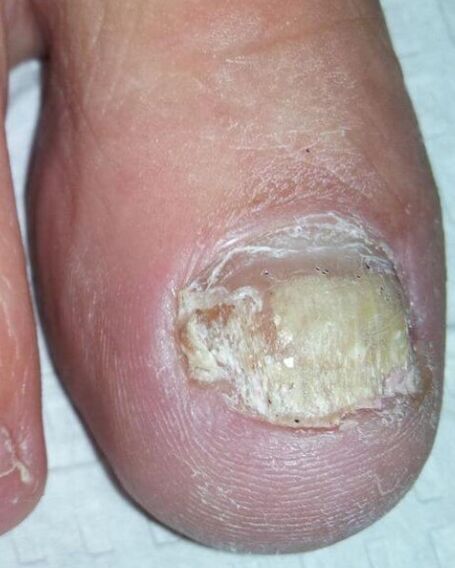
Reasons
In most cases, mycosis infection comes from a person to a person directly or through surrounding objects. The favorable conditions for the reproduction of the fungus are fever, humidity. Disputes can also maintain viability in a dry state, after poor quality processing of manicure tools.
The main reasons of the disease include:
- Lack of regular feet care.
- Accommodation with a person suffering from a fungus.
- Using another person's shoes, socks.
- Stop injuries.
- Visit common areas of "fungi" (beaches, bathrooms, swimming pools).
- Insufficient pedicure accessories processing.
- Using adjusted shoes of synthetic materials.
- Professional repeal (work in high temperature and humidity conditions).
- Shooting shoes in a store without sock or detachment.
Fungal diseases in humans develop faster at the bottom of the characteristics of functioning, as well as changes that lead to the suppression of immunity, the deteriorated local circulation, changes in skin condition. The body reasons are as follows:
- Endocrine pathology (diabetes, obesity);
- pregnancy;
- Immunodeficiency states;
- greater sweating;
- foot diseases;
- vascular disorders;
- chronic skin diseases (eccema, psoriasis);
- Long -term intake of drugs that suppress immunity (corticosteroids, cytostatic).
Types of pathogenic fungi
Fungi in the human body feed on proteins: keratin, elastin, collagen, dividing them with enzymes: keratinase. The location of mycosis depends on the activity of keratinase and the ability to digest different types of keratin.
Leg mycosis causes the following types of fungi:
- Trichophyton Rubrum-a type of fungi-suprophytes that inhabit a keratinized skin layer. It causes lichen, damage to the epidermis, nails in 80 % of cases.
- Trichophyton Mentagraphytes Cause Epidermophytius stop.
- Trichophyton Interdigitale. In the legs, the fungus causes dermatophotosis, onychomycosis.
- The fungi of the Candida genus affect the skin and nail plates with a severe decrease in immunity affect skin and nail plates with a severe decrease in immunity.
Fungal skin lesions
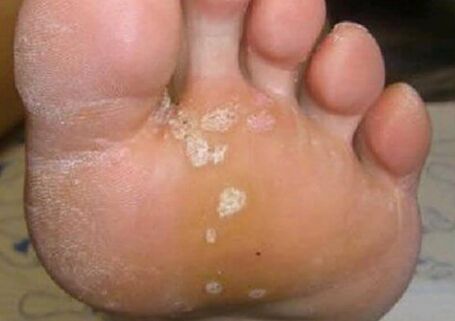
From mycosis in the legs, skin lesion during psoriasis (sometimes it is called dry fungus): red plates with peeled and a tendency to fusion that rises on the surface. Such elements are often found on the knees, legs. This disease is not associated with fungal infection.
The manifestations of the fungus of the foot are conditionally divided into four main forms. The convention is in a combination of clinical signs and the possibility of transition from one to another.
Intertriginously, the skin is suffered in interdigital spaces. The fungus of the legs of the legs manifests in the form of itching, burning, is accompanied by an unpleasant smell. Often, the infection affects the foot from the intervals between 3 and 4, 4 and 5 fingers. The skin becomes red, impregnated with moisture, sores and crying areas appear between the fingers. These signs are developed independently or in the background in a squamous way.
Note! For typical intertriginous lesion, the union of a secondary bacterial infection that exacerbates the disease. The bacterial and mythical eczema develops with the formation of an eruption not only in the foot, inflammatory elements appear in the ankle, going down.
The advanced shape of squamous hyperatotic resembles the common and massive calluses in the sole with cracks. Initially, leg mycosis can attract attention with dryness, peeling the skin of the feet, rough corn limited in the heels. People believe that such symptoms are an individual characteristic and do not resort to a dermatologist. Skin lesions can accompany itching, ardor. If you look at the fungus photos on the legs with this form of mycosis, you can notice deep cracks at the bottom of a thickened (and, so to speak, quiet in moccasins) of the skin of the feet. Such manifestations are painful. The squamous form is characterized by the participation of nail plates with their destruction, a delay behind the nail bed.
The manifestations of the dishritical (vesicular) form of the fungus of the foot are uncommon. The main symptom of the disease is the formation of bubbles with a thick shell and transparent content. They are located on the only side of the foot, fingers as individual or drainage formations. Then, bubbles open with erosion formation with purulent scabs around the edges. Vesicular lesion complications include:
- Toxic allergic reactions. They develop for 4-6 days, often symmetrically located: swollen reddish papules can be found in the foot, the lower part of the leg, the forearm, the face, the mucous membranes.
- Connection of a secondary bacterial or viral infection with the development of eccema.
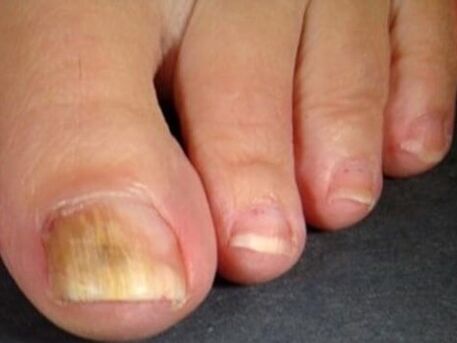
The erased shape of the fungus on the feet is characterized by minimal lesions, so it is not easy to recognize it. The main signs: the appearance of intestinal peeling, the formation of microsets between the fingers, discomfort, ardor. With a long course, nail plates are involved.
Nail fungus
Onicycosis appears as a result of the fungus of the skin on the fingers, the feet, in the absence of attention to the problem and adequate treatment.
The first symptoms and signs of onychomycosis can also go unnoticed. You must communicate with the nail fungus on your legs and communicate with a dermatologist at:
- change in the color of nail plates;
- the appearance of yellow or grayish spots;
- loss of brightness;
- appearance on the surface of irregularities;
- you throw in the nail structure;
- Increased fragility.
There are several classifications of onylomycosis. Due to the appearance of the nail plate, they are divided into:
- NormotrophicFungal infection changes the color of the nails to yellowish gray, thickness and shape remain the same.
- Hypertrophic. This type of fungus is characterized by gross changes: nails become yellow, thickened. If you observe the photos that represent this type of onychomycosis, you can notice a colacible form characteristic of the plates. Transversal studies, loosening and fragility on the free edge are visible. Such change in the nails leads to its growth. Walking becomes painful.
- OnicolithicThe nail plates become thinner, change color, exfolian from the bed of the nail.
According to the location and degree of damage to the nail plate, the following types of onylomycosis are distinguished: distal; side; mixed, proximal; total; surface.
Candidiasis defeat
Separately, damage to the fungi of the Candida genus should be considered. These pathogenic fungi conditionally cause deep (which affect the internal organs) and surface mycosis (dermatomycosis, onychomycosis). Under normal conditions, human immunity suppresses the reproduction of this fungus and a massive infection is not produced. Therefore, Candida's activity is manifested with significant disorders in the body to protect the body and requires an exhaustive examination to establish the cause of immunodeficiency. The first signs of infection are difficult to distinguish from injury, freezing.
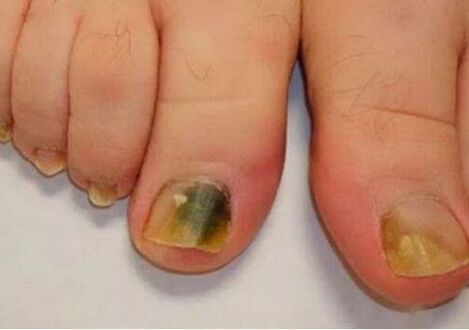
The fungal damage to the legs develops as follows:
- In the fingers of the legs there is an inflammation of the nail roller with redness, swelling, cracks on the skin, the appearance of discomfort in any movement. Under the nail plates, a purulent separate whitish tone is formed.
- Inflammatory changes in the skin decrease, the disease becomes chronic. The skin around the thick nail stops growing. The infection affects nail plates.
- Leg nails begin to thickens, sprinkle. Its color becomes brown, brown. The violation of the blood supply leads to rejection.
Diagnosis
The diagnosis of leg fungus includes:
- Conversation with the patient (complaints, diseases that accompany, working conditions, clarification of the possibility of infection).
- Inspection.
- Laboratory research methods (skin scraping, microscopy nails, sowing a dedicated culture with determination of drug sensitivity, IG G to Aspergille, candidates).
Treatment
The fungus in the legs requires immediate treatment that will prescribe a dermatologist (or mycologist). You can perform tasks in an outpatient basis.
How and how to treat the fungus in the legs depends on a series of conditions:
- location of the pathological process;
- grade, severity of defeat;
- the presence of concomitant diseases;
- patient age;
- In cases of women's therapy, pregnancy, breastfeeding.
The treatment of the fungus in the legs takes a long time and its main objective is the disappearance of the clinical and infection laboratory signs. An incomplete therapy course leads to the relapse of the disease.
Drug therapy
Pharmacological treatment is carried out using antimicotic drugs that not only destroy mycosis, but also help eliminate manifestations of inflammation and eliminate secondary infection.
They are divided into:
- Local. Apply to the lesion (ointment, gel, cream, spray, varnish, solution).
- Systemic: Take orally (tablets, capsules, solutions).
In the initial stage of a fungal infection, pharmacological therapy is limited to the appointment of local funds. With common mycosis, with a severe course, the connection of systemic antimicotics is required.
Treatment with popular remedies.
There are many recommendations on how to get rid of the fungus in people's legs and home remedies. The majority implies external use and some, inward. However, you should not drink and apply doubtful compositions at your feet in the hope of bringing careless mycosis. Such popular methods can damage health.
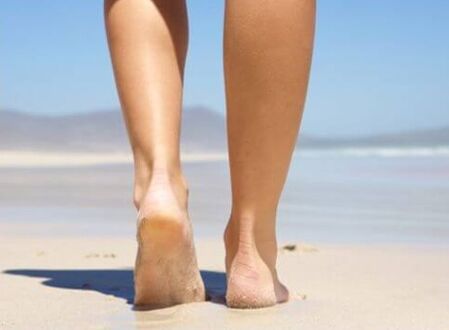
Note! The most common and effective home remedy for the fungus are leg legs with salt, soft drinks, essential oils. These therapeutic procedures prepare feet and nails for drug application.
Surgical treatment
With massive fungal damage, nail plates must be removed. This method is safe and practically has no contraindications. An alternative to surgical manipulation: the use of pasta and ointments to soften the nails followed by elimination.
Laser treatment
The use of a laser to combat onychomycosis is based on heating and destruction of fungus spores with a directed beam. This technique allows you to quickly cure onicycosis, safe and applicable in patients who are contraindicated in systemic treatment.
Dermatomycosis treatment
To start the fungus treatment, local antimicotic agents are used in the legs. If after a 2 -week treatment course there is no improvement in the condition, an antimicotic agent is required. In case of severe damage, skin fungus requires the prescription of systemic medications. The therapy continues to the complete elimination of the infection.
Treatment of onychomycosis
To eliminate the initial manifestations of the nail fungus, local drugs are prescribed. Mycosis with an injury of more than 2/3 of the nail area, which involves the growth zone, distribution to other plates, an indication of taking systemic medications. Onicycosis with mass destruction of nail plates begins to be treated with the surgical elimination of the affected tissues of the nail. This method provides access to the infection approach.
Important!
The treatment of onychomycosis is carried out before healthy nail growth and can last up to 12 months.
The appearance of leg fungus can be caused for several reasons. A attentive attitude towards your health will help recognize the disease in time and begin treatment.





























